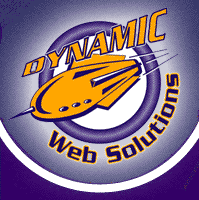
The World Wide Web Browser Tutorial
Tutorial OverviewTopics covered in this tutorial (click link to jump to topic):
IntroductionWhen you first open the web browser it will automatically load a "homepage" - usually that of the browser's manufacturer. E.g. Internet Explorer will load the MSN homepage. Most people find this irritating and change the default homepage setting to something they are more interested in like weather reports, stock exchange info or their favourite search engine. To change your homepage to your preferred page, browse to the page you want as your homepage. Then go "View", "Internet Options", select the "Use Current" button. As a page "loads" into your browser you will see the text come in, the pictures arrive - all the basic elements of a web page. You will notice that some text is underlined and in different colours - this is hypertext, if you click on it, you will jump to another web page. When you move your mouse arrow over a link the mouse's pointer will change to a hand. This indicates there is a hypertext link associated with that text. The same applies to pictures, that is, if you move your mouse over a picture and your mouse arrow turns from an arrow to a hand, you know there is a link there. The process of clicking hypertext links, loading one page after another, is called "browsing" or "surfing the web".
Getting around the Web - your browser's tool barThe Internet Explorer tool bar looks like the one below. The tool bar is essential for navigation and frequently performed functions.
The Address BarThe address or URL of the current page you are on appears in the "Address" Bar below the tool bar. You can click in here at any time and overwrite this address with another if you know the address off the top of your head. Leave the "http://" as it is required at the start of the URL, it indicates that the browser is to use hypertext transfer protocol to request the web page. URL stands for "uniform resource locator". In non-technical terms you can think of it as simply the address of a web page.
When a page is loading you may see some unusual things - the wavy window (top right) waves and a green status bar (bottom right) moves from left to right. The wavy window is simply saying that your browser is looking for the page you requested, while the status bar shows you how much of the web page has loaded. Bottom left, in the gray frame you will see words flashing backwards and forwards. These are the names of all the files that will make up the web page you have requested.
CachingAs you browse the web, your machine saves html files and images that you request. This process is called "caching". Internet Explorer calls cached files "Temporary Internet Files". Caching is designed to speed up your experience on the web. Caching occurs on your machine and sometimes on the servers of your Internet Service Provider. If you own a web site or make changes to a web site, you may have to refresh your browser to see your changes. The quick way to do this is to click the refresh button on your browser. This sometimes does not work if other servers above you have cached your page. To get past this, and back to the original server, press Ctrl + F5 (or hold Shift while pressing the Refresh button). You can control you caching option by going Tools > Internet Options. On the general tab, you will see an area called Temporary Internet Files. SSLAlso, sometimes you will see a little padlock appear (bottom right on the status bar More and more secure servers are appearing on-line as banks, shops and others move more of their businesses to the web. Security on the Internet is handled by a protocol called SSL or Secure Socket Layer. This protocol is very robust and unlikely ever to be practically cracked. However, where human intervention or handling of credit card numbers is possible, security breaches may occur.
Extra ToolbarsAn increasing number of people are installing their own tool bars into their preferred browser. Below is an example of the Google Tool Bar. It installs into the browser and can be selected or deselected as with any other tool bar the browser uses. Other popular tool bars include the Yahoo Tool Bar, MSN Search Tool Bar and Alexa Tool Bar. Tool bars put common functions like performing a search, auto filling a text box or pop up blocking at your finger tips.
[Web Site Design] [Search Engine Submission] [Web Site Hosting] [About Dynamic Web Solutions] [Internet Tutorials] [Sitemap] [Links] [IRC] [Homepage]
24-May-2008
|